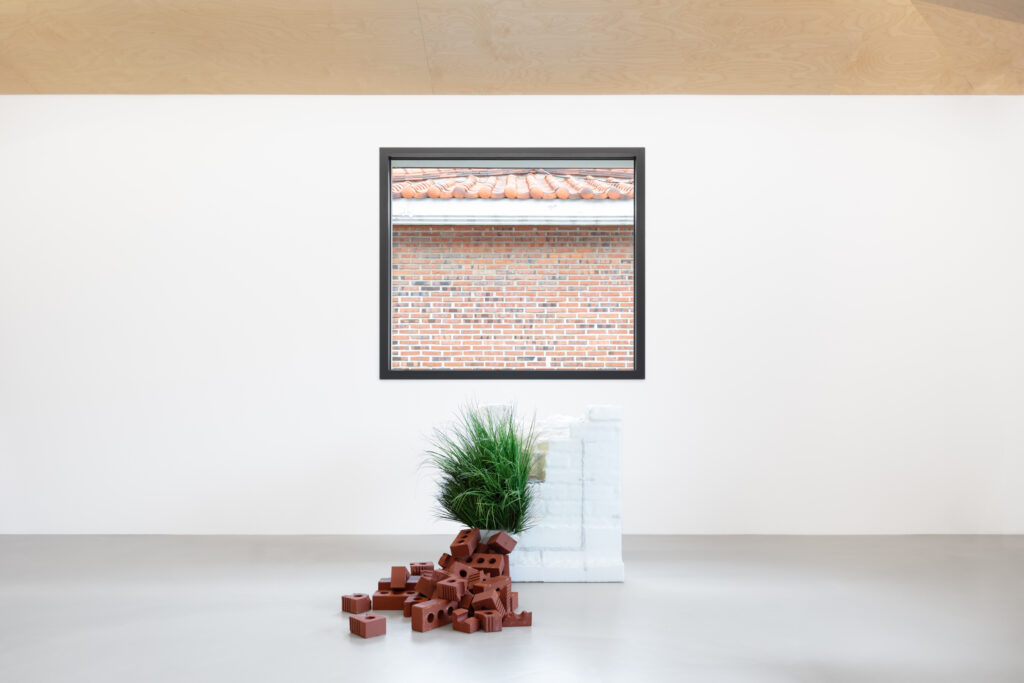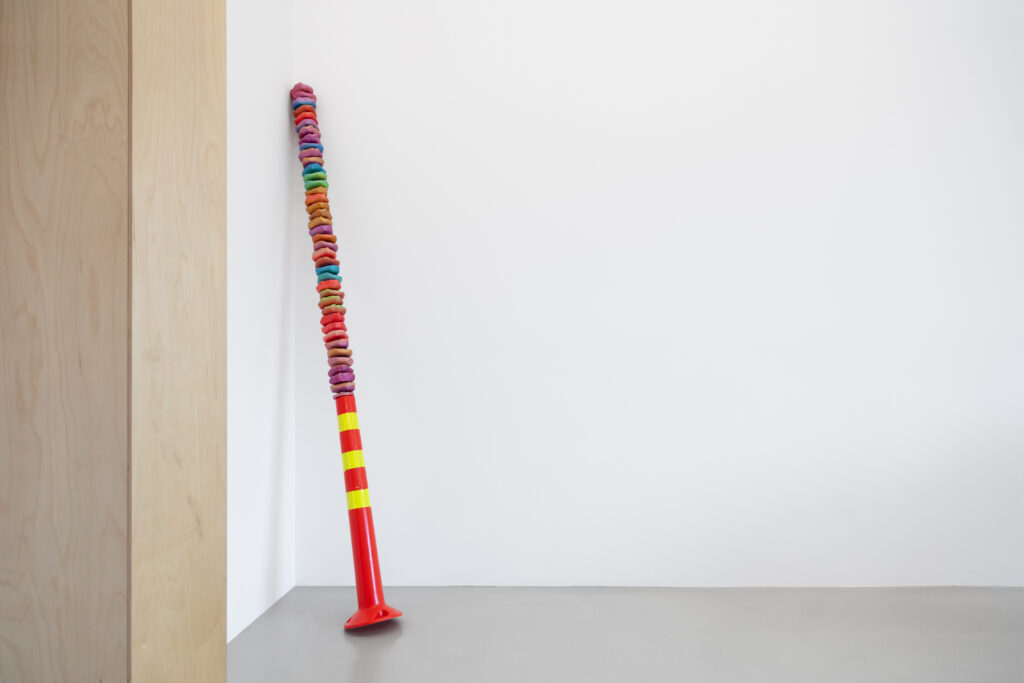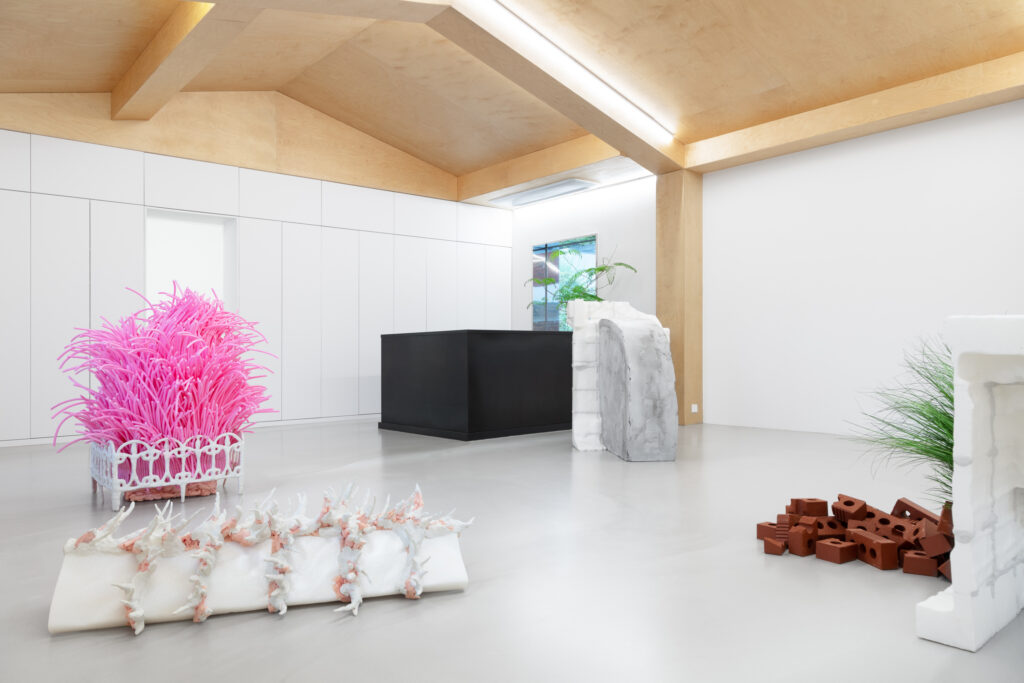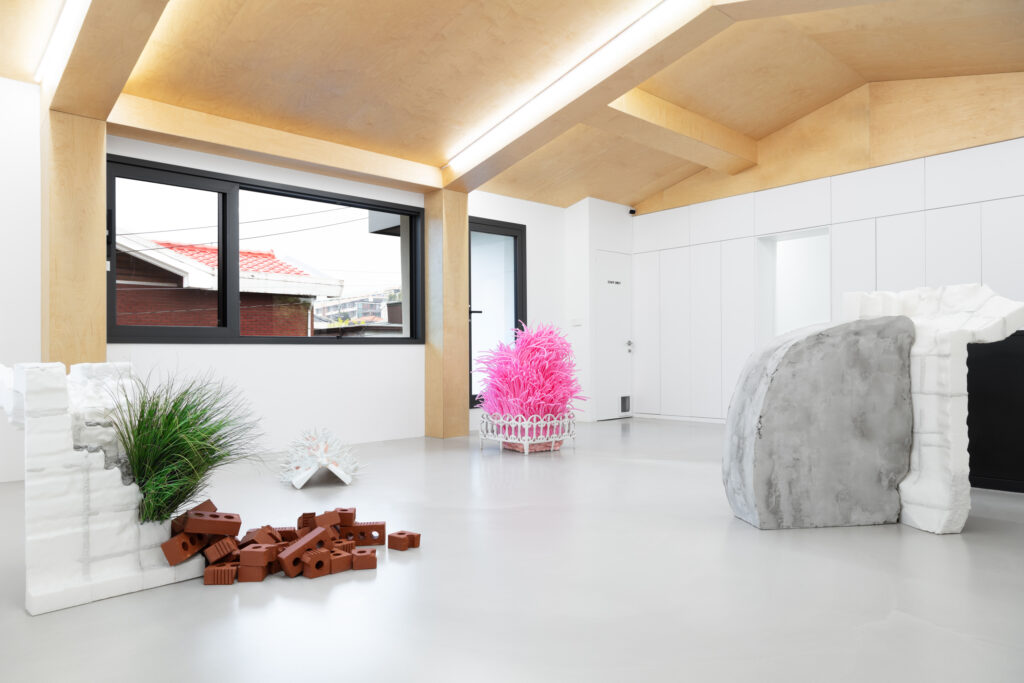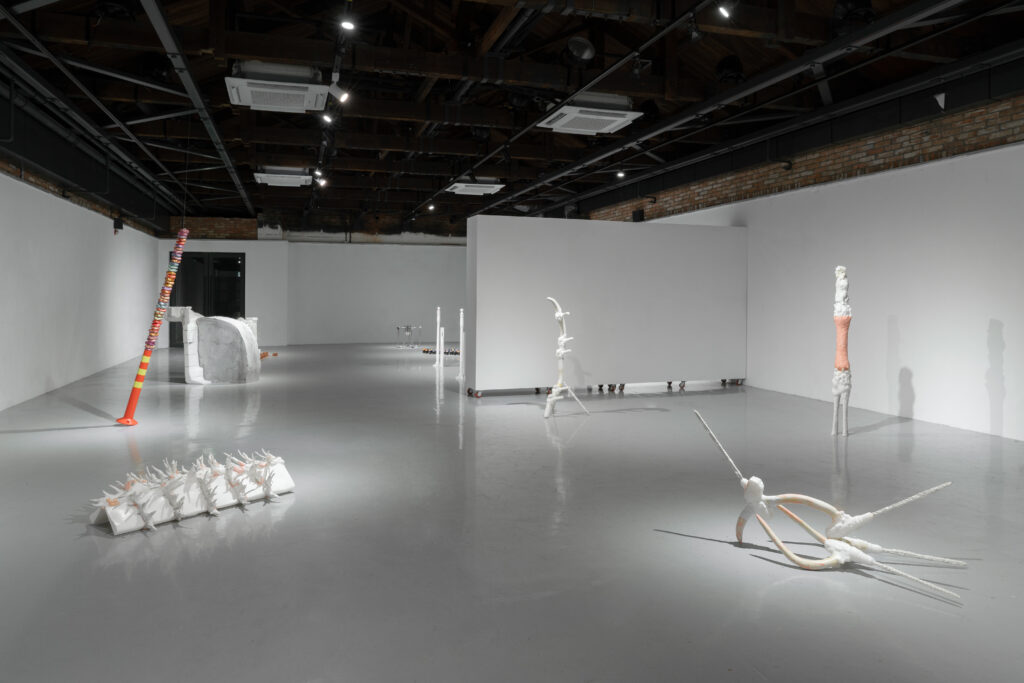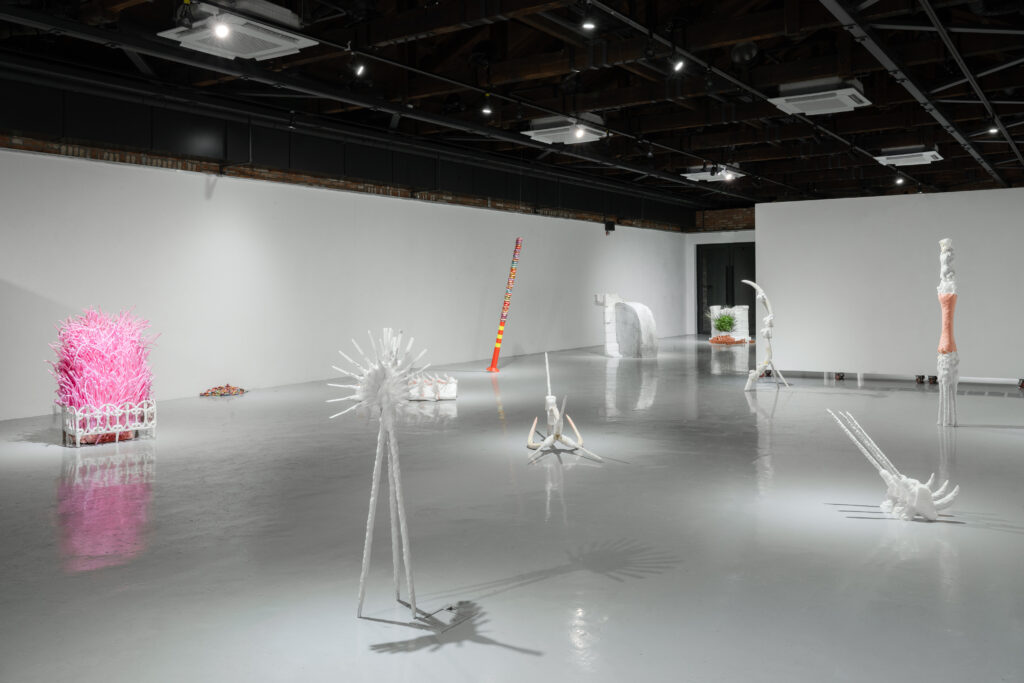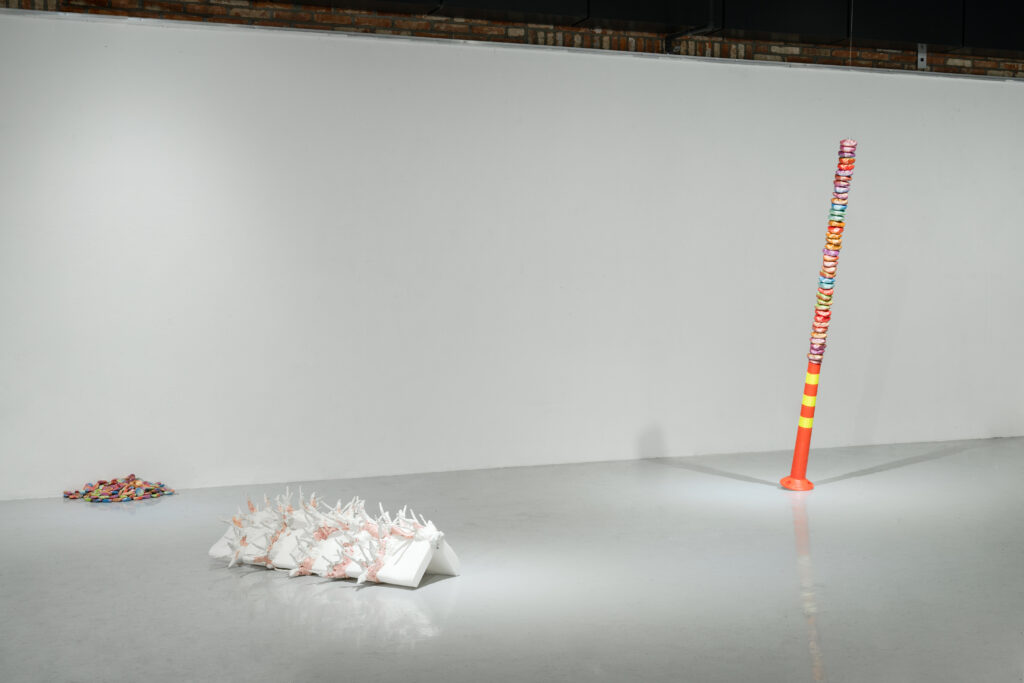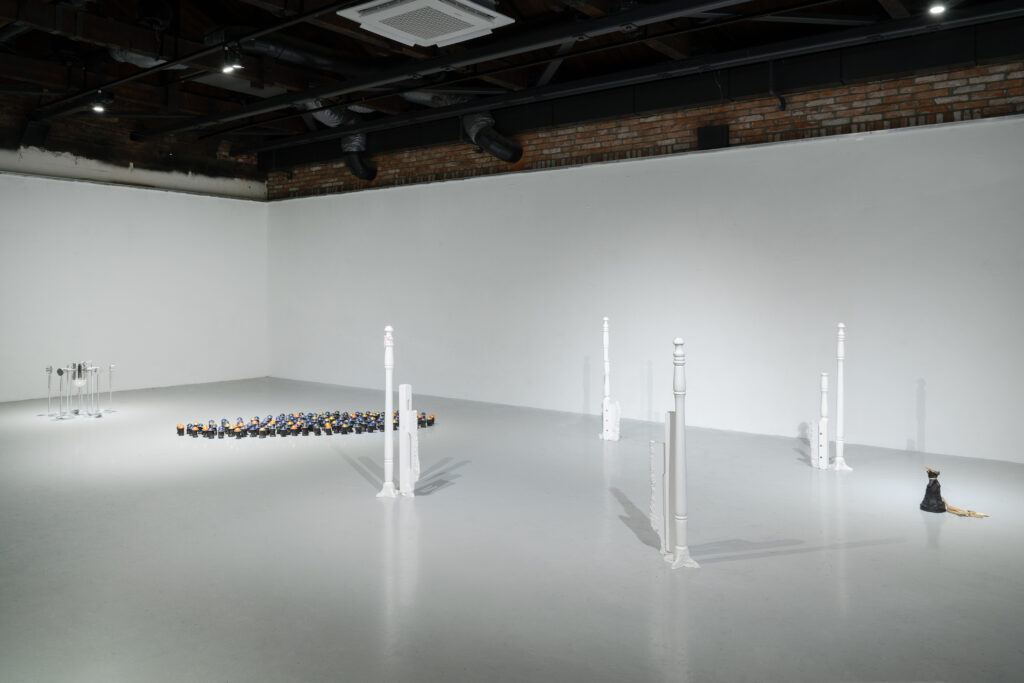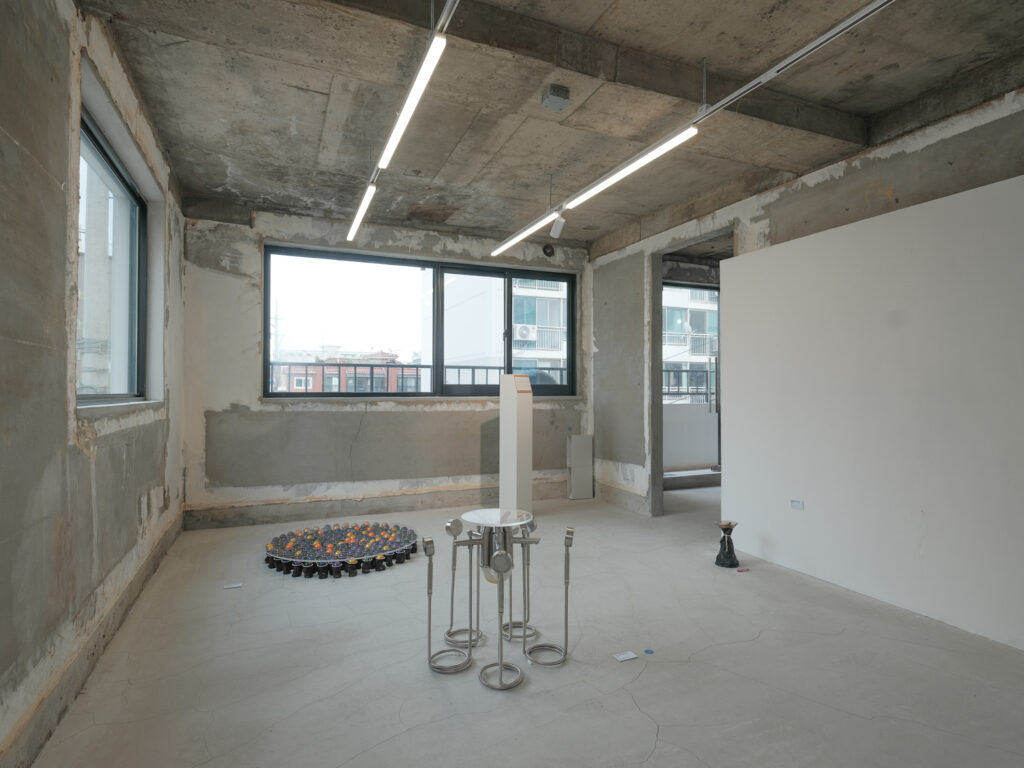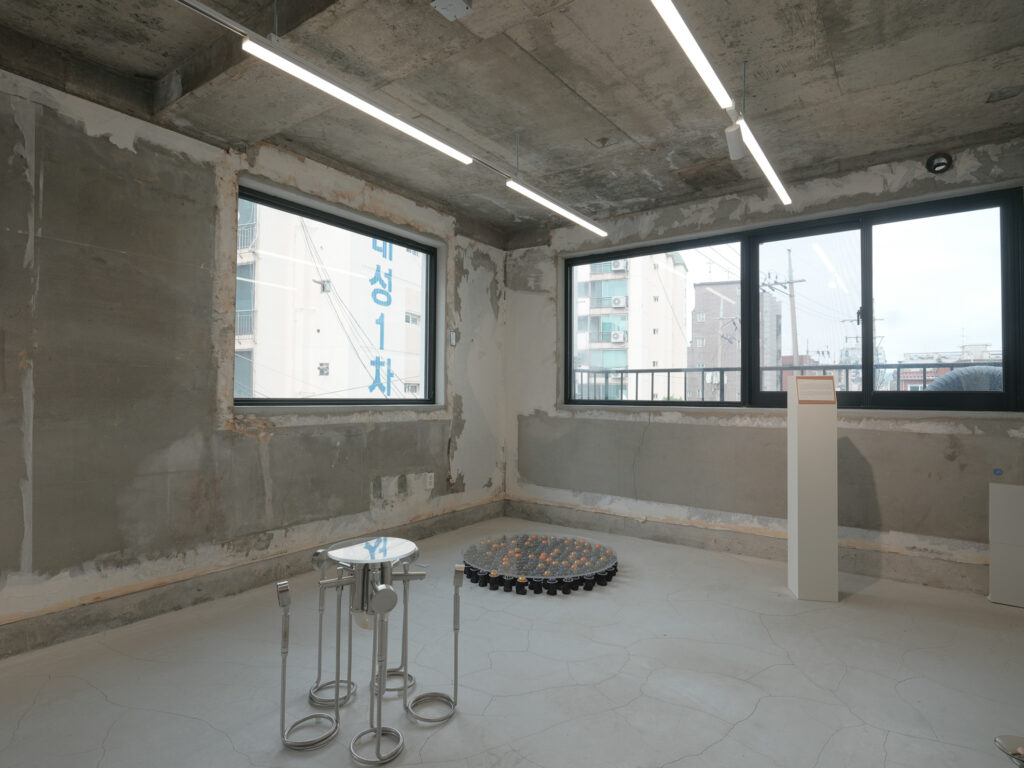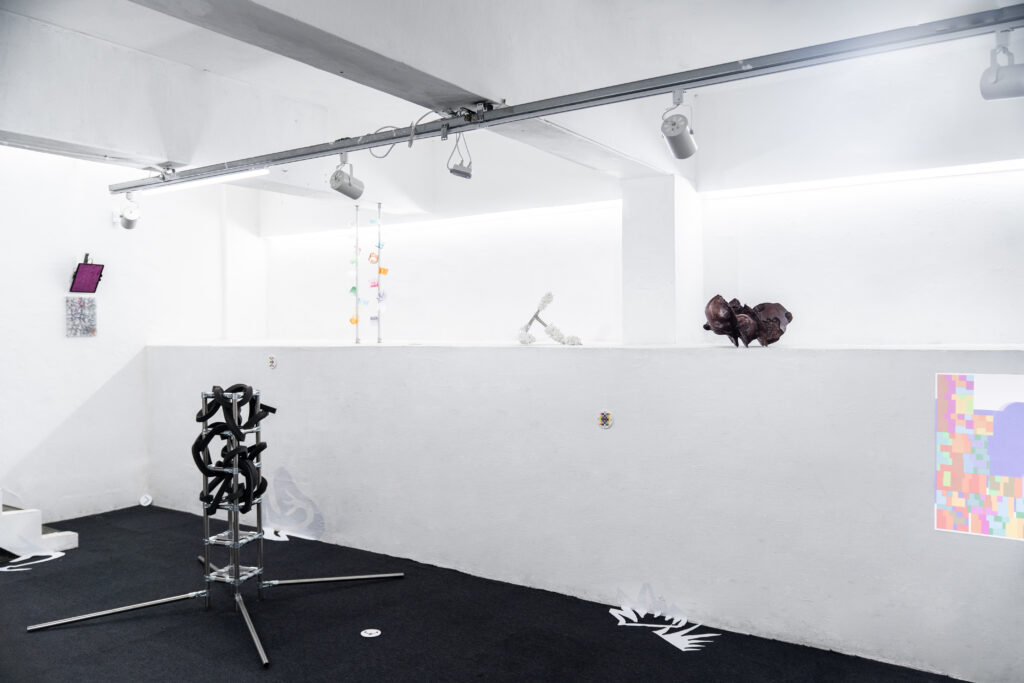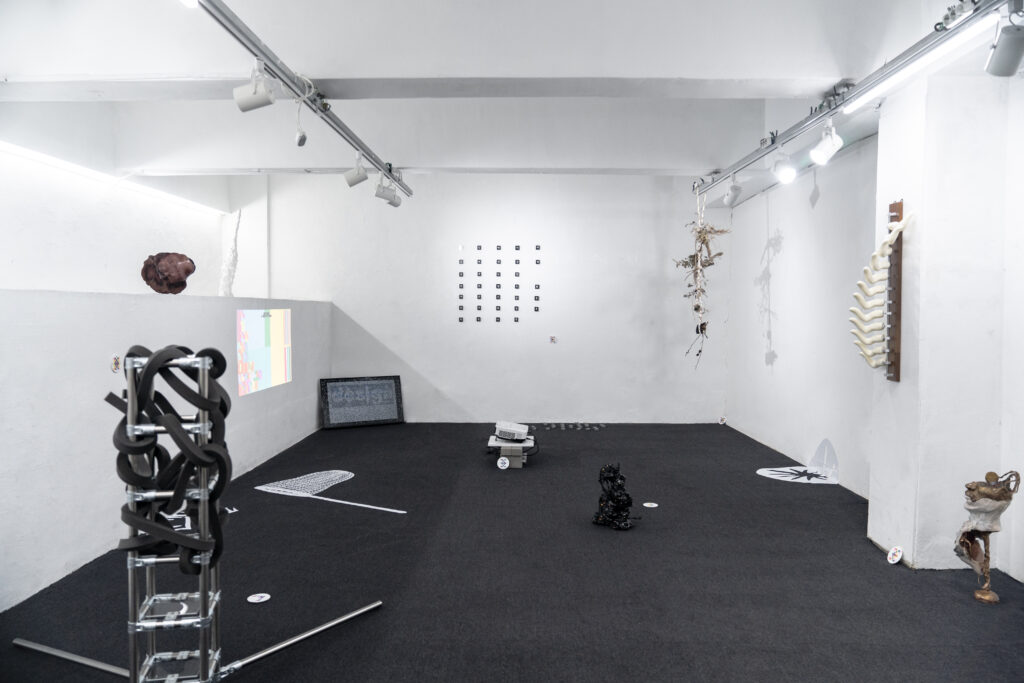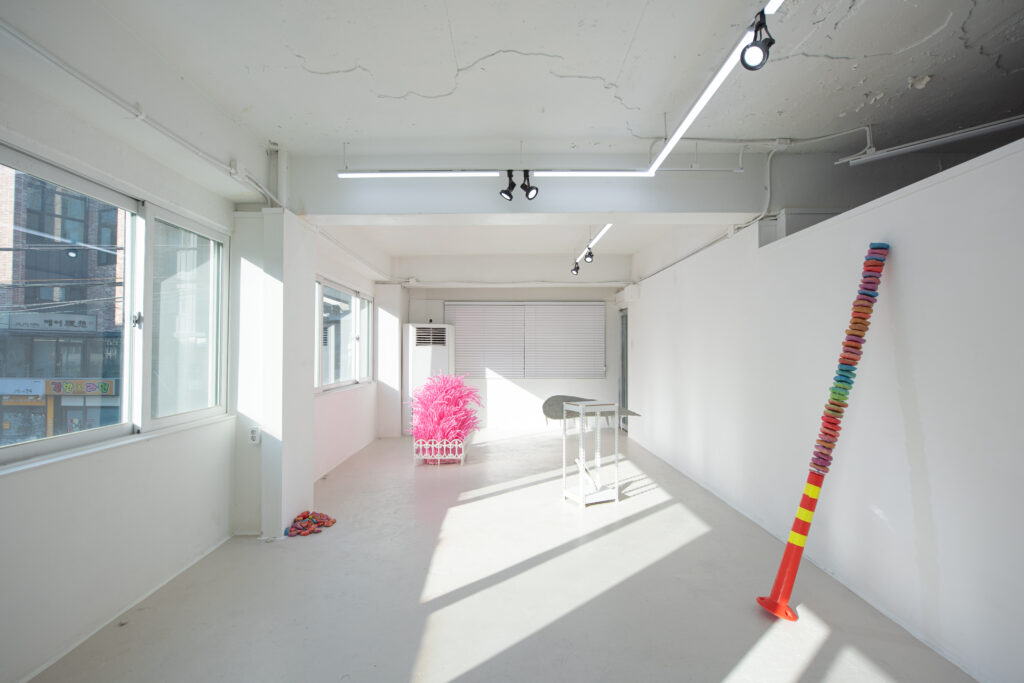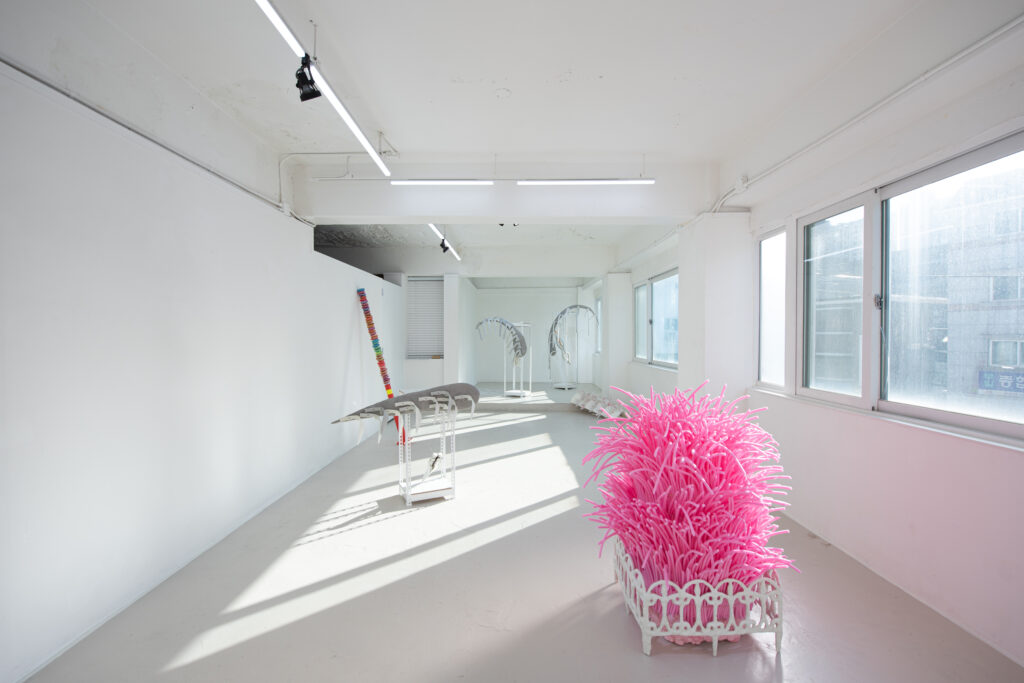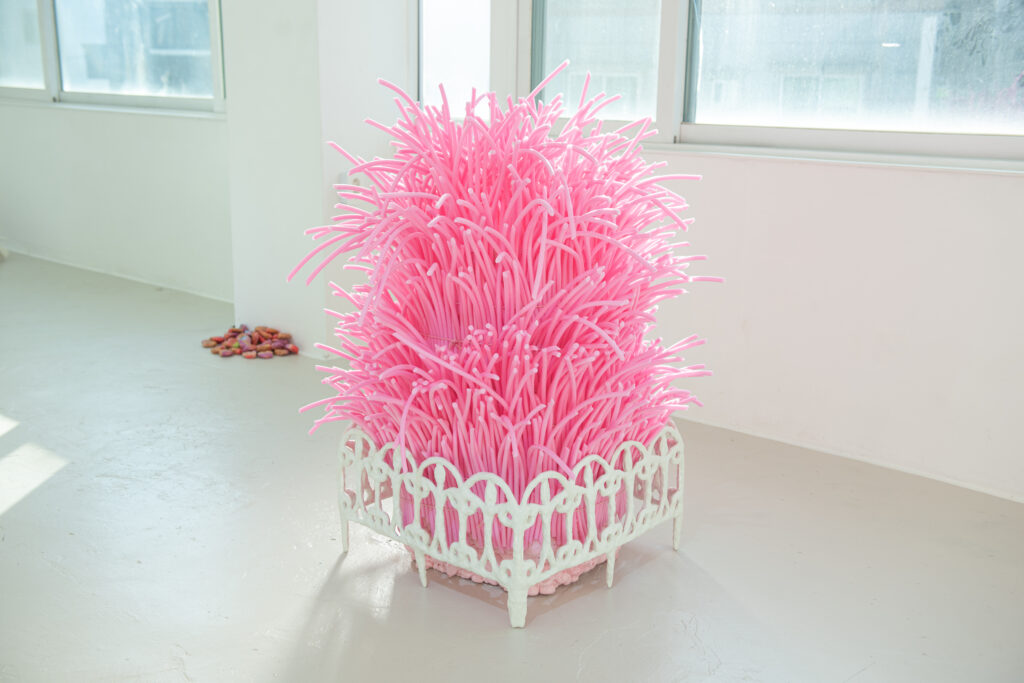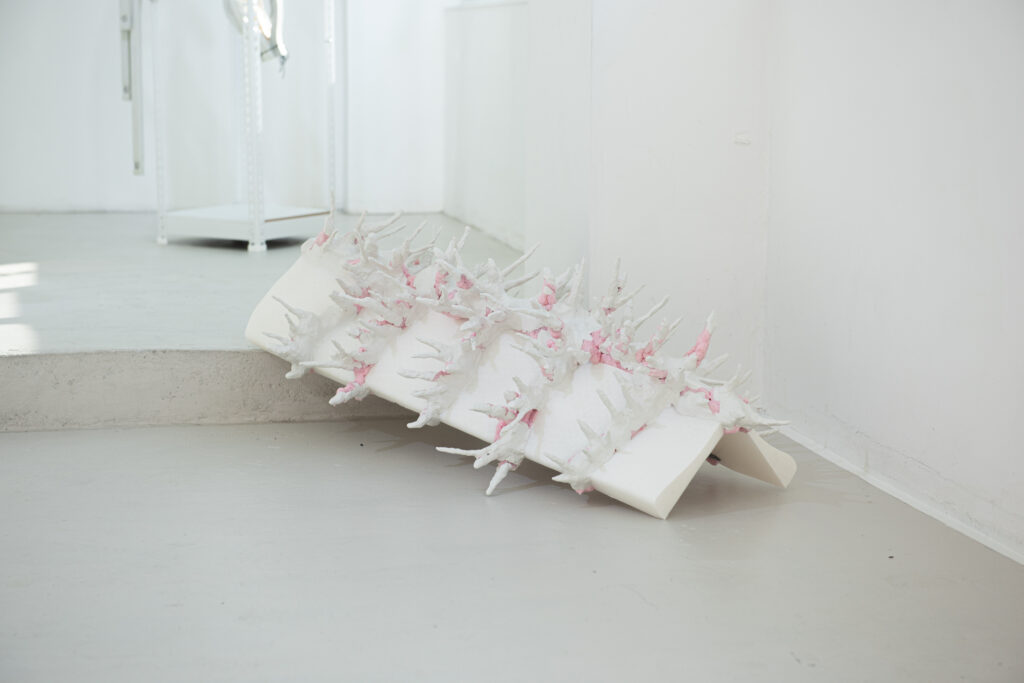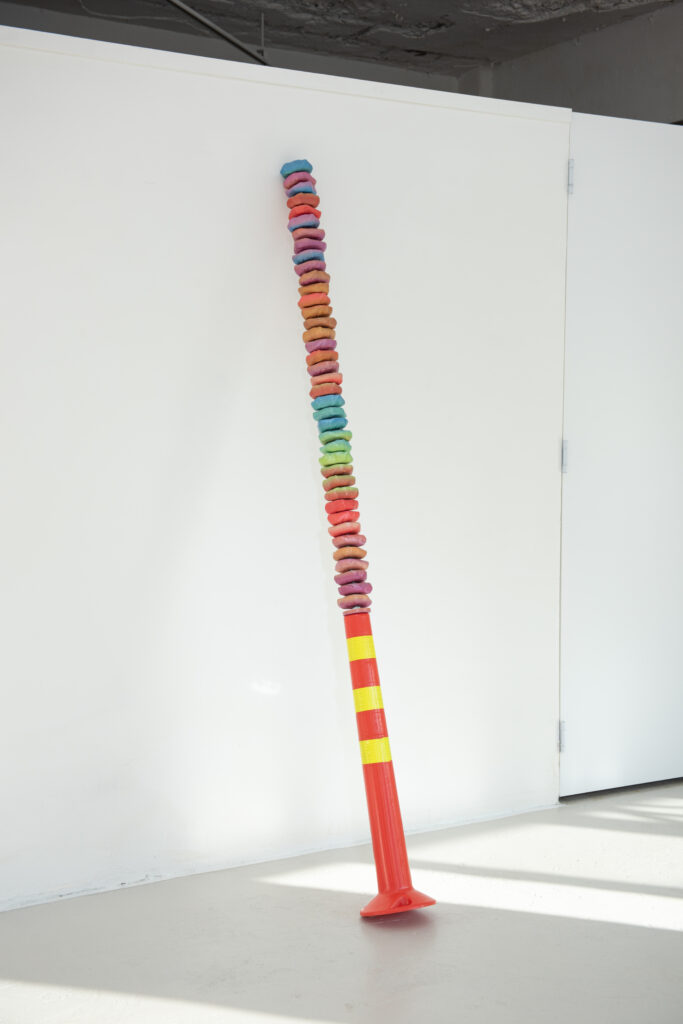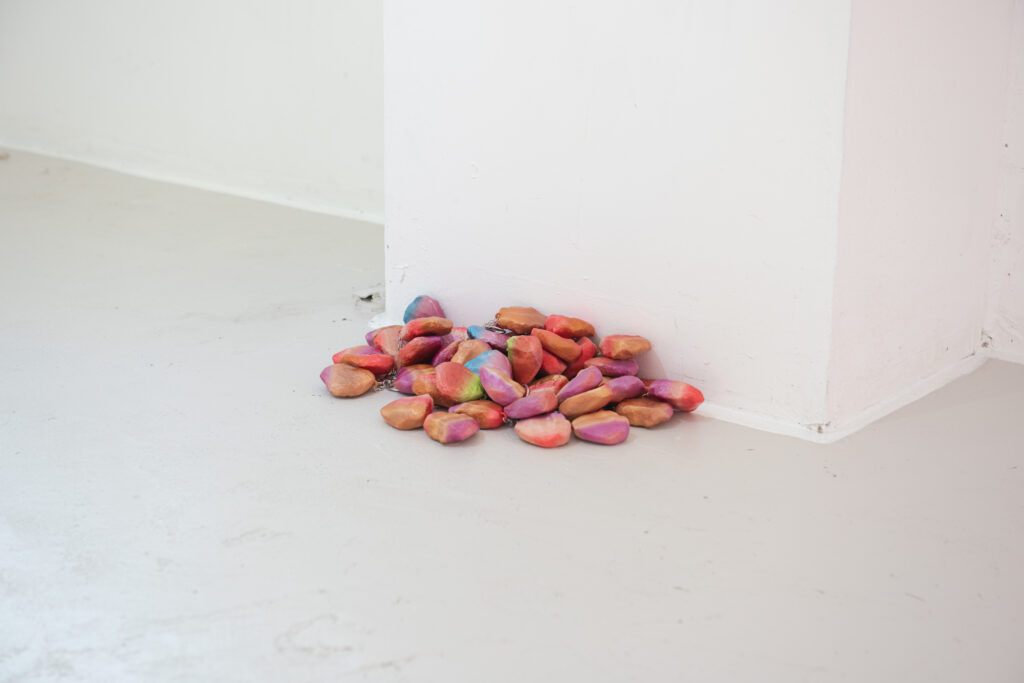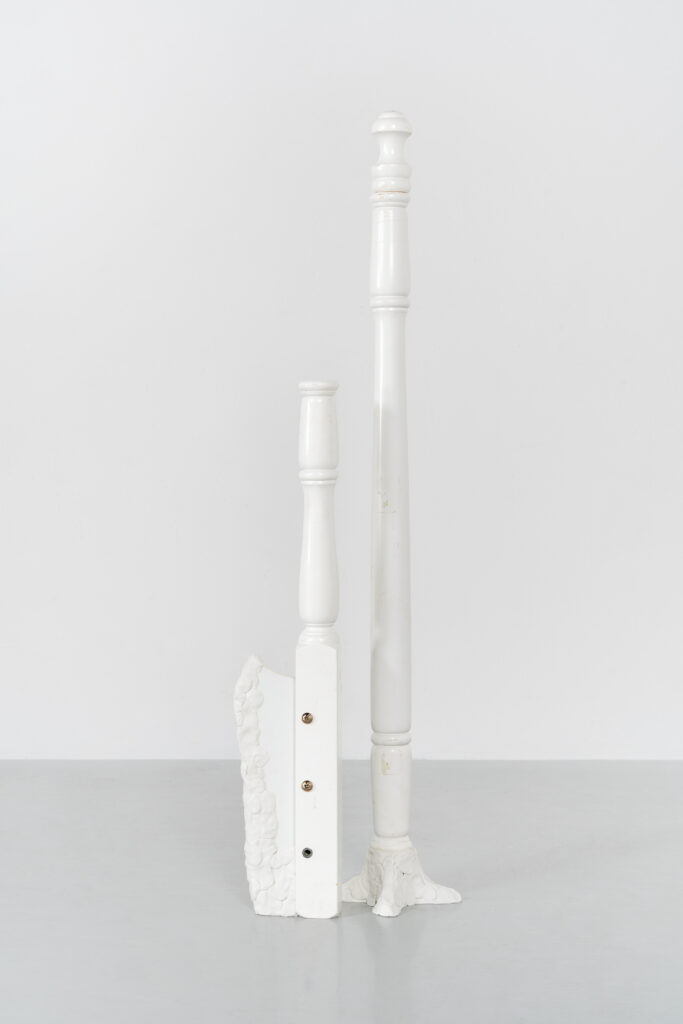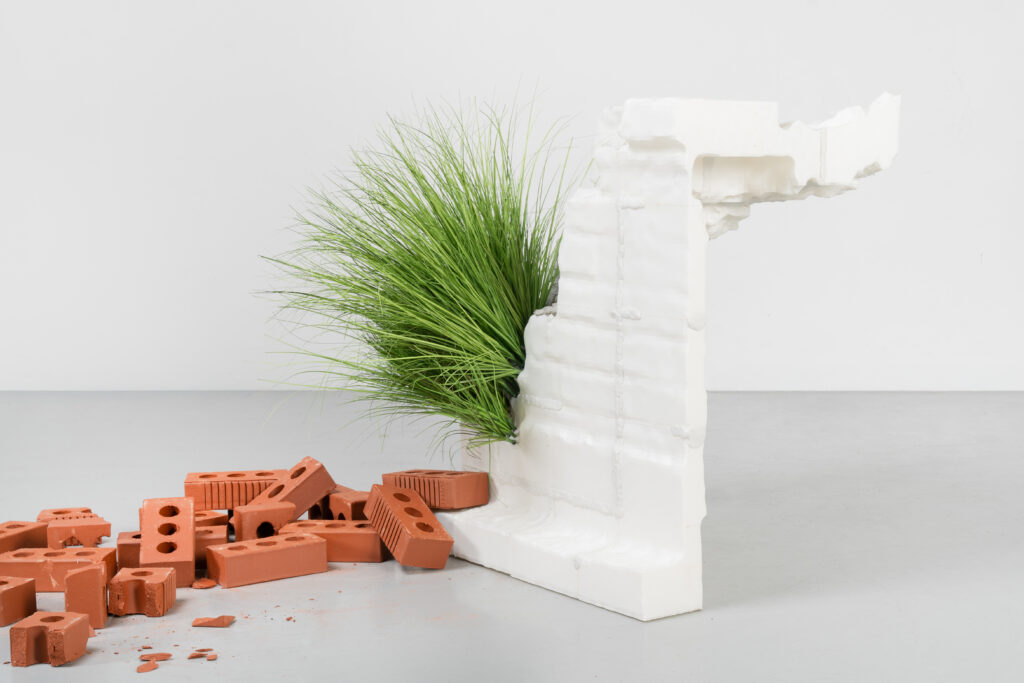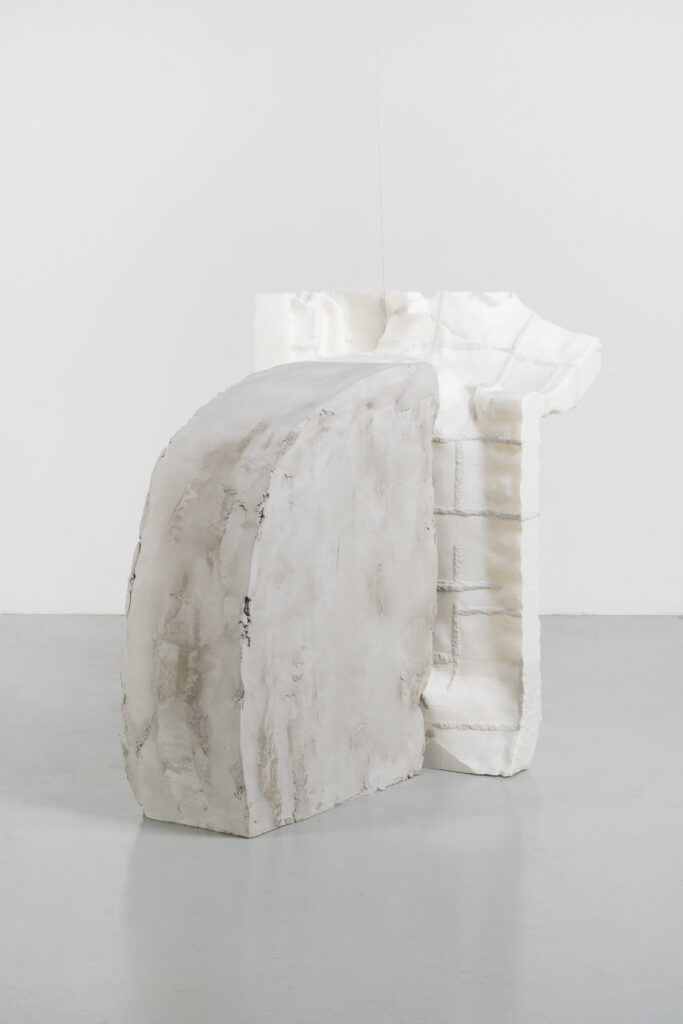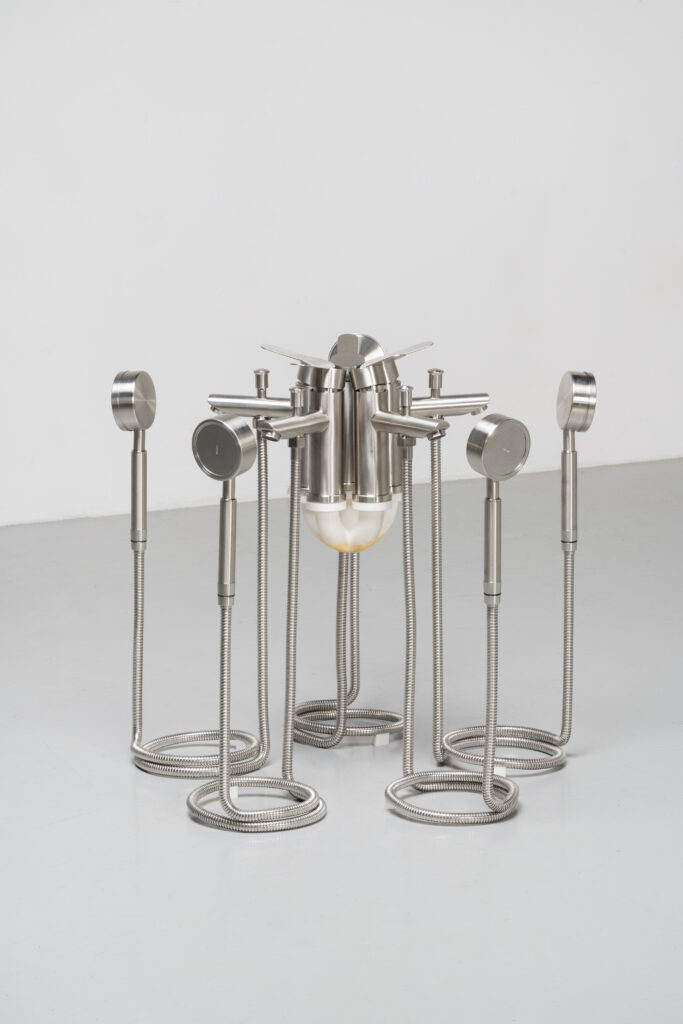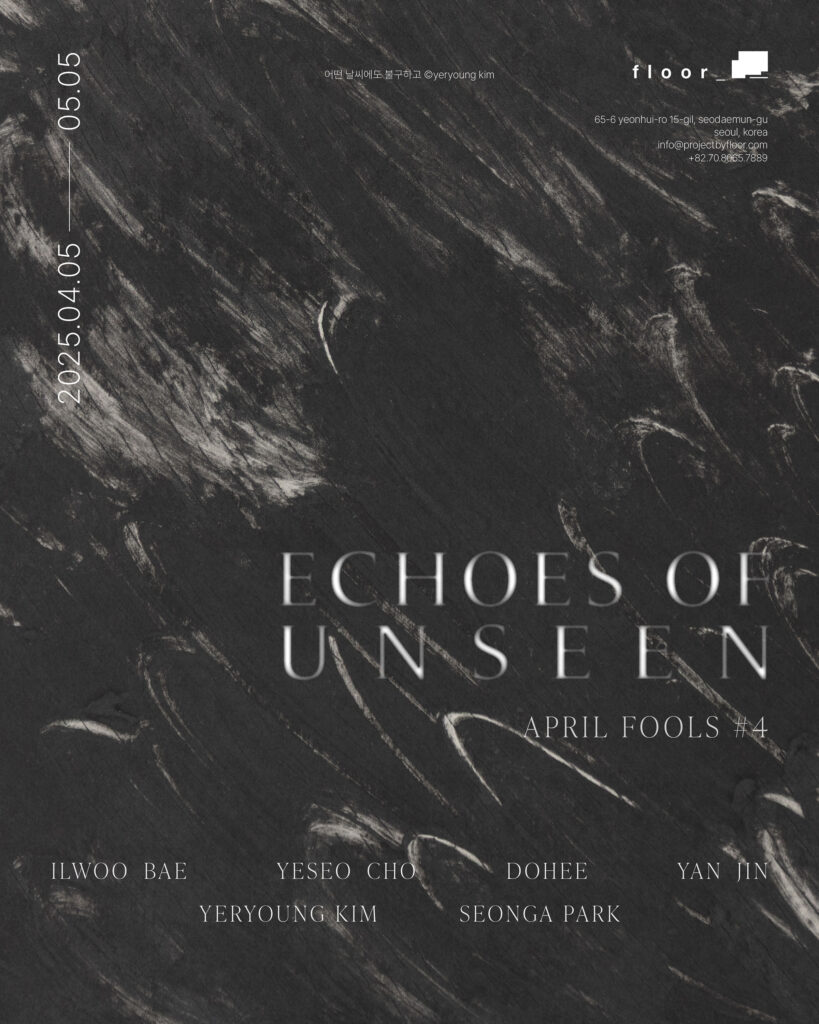
Group Exhibition
April 05 - May 05, 2025
Floor 65-6 Yeonhui-ro 15-gil, Seodaemun-gu, Seoul
Artist: Bae Ilwoo, Cho Yeseo, Dohee, Yan Jin, Park Seonga, Kim Yeroung
Each gesture unfolds in layers of time, space, and perception. This exhibition brings together the work of six artists whose practices resonate with and emphasize the relationship between materiality and meaning. Their works offer an intertwined visual exploration of presence and absence, memory and transformation. Through distinct approaches, the artists form a dialogue that extends beyond the visible, inviting viewers to engage with what is unseen, intangible, and ephemeral.
Each artist engages with the audience through a unique perspective. Some reconstruct fragments of experience, distilling them into forms that hover between recognition and abstraction. Others manipulate surfaces and textures, challenging our perception of what is visible and what lies just beneath. Through these gestures of accumulation, erasure, and reinterpretation, a shared visual language emerges, one that speaks to both personal narratives and broader emotional and collective landscapes.
By bringing these practices into conversation, the exhibition reflects on how meaning is built, shifted and unraveled through artistic process. It invites viewers to pause and observe-to trace the subtle transitions within and between works, to consider the echoes they leave behind, and to find resonance in the spaces between the seen and the sensed.
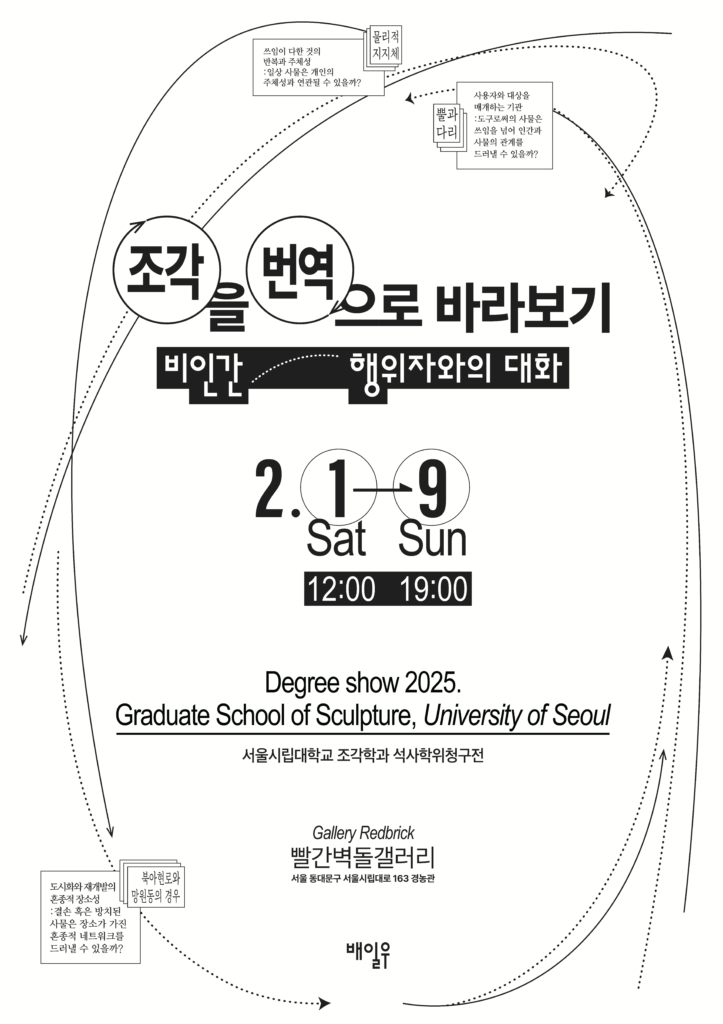
Master’s Degree Graduation Exhibition
February 1 – 9, 2025
Red Brick Gallery, 163 University of Seoul ro, Dongdaemun-gu, Seoul
Artist: Bae Ilwoo
Design: Bae Ilyoung
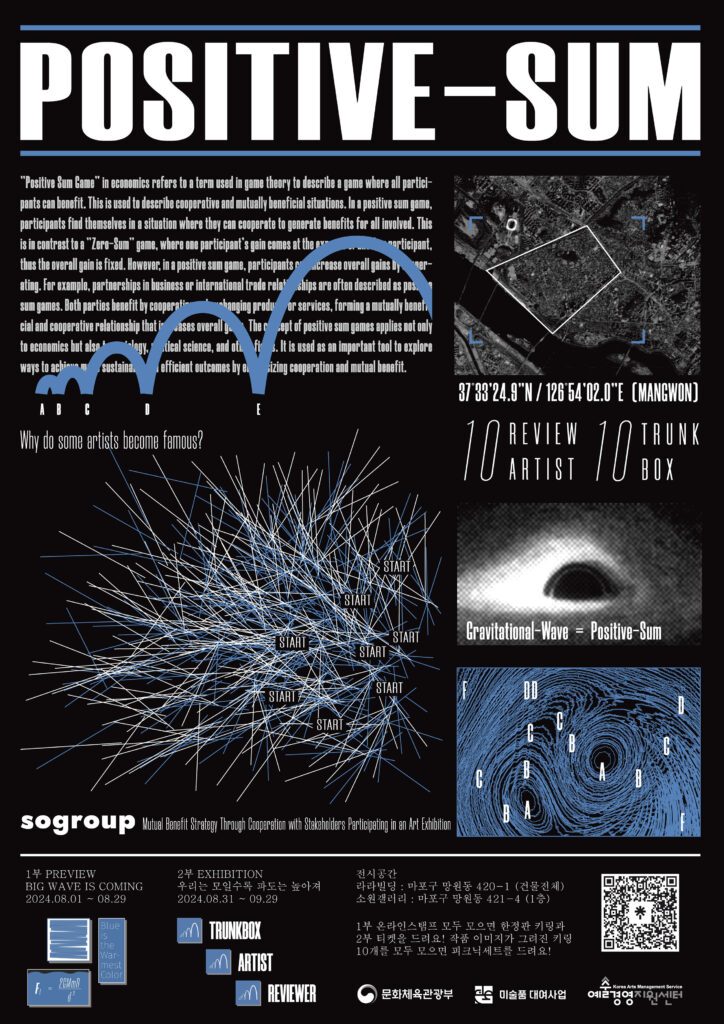
Group Exhibition
August 31 – September 29, 2024Lara Building, 131 World Cup-ro 25-gil, Mapo-gu, Seoul
Artists: Kim Minwoo, Lee Insu, Kim Yesol, Bae Ilwoo, Kim Junhak, Ithaca, Kim Chaeyoung, Yoo Dowon, Yoon Mari, Sihyun
Critics: Lee Dam, Do Hyemin, Kang Bumin, Lim Huijae, Park Seoyoung, Park Sujeong, Ji Sohyeong, Kim Jihyun, Seong Jiyoon, Jeon Gyuyoun
Positive-Sum: A Relationship of Mutual Cooperation
In economic terms, a zero-sum game refers to a situation where one party’s gain is another’s loss. In contrast, a positive-sum game describes a scenario in which all participants benefit through mutual cooperation. In Korea, this concept is sometimes translated as a “win-win strategy,” emphasizing the increase of collective benefit through reciprocal engagement.Indeed, the history of human economics has been shaped not by zero-sum competition but by systems of cooperation—by positive-sum mechanisms.
This exhibition looks beyond the artists and their works, highlighting the involvement of many different stakeholders: curators, critics, lecturers, coordinators, invigilators, publicists, installation and de-installation teams, and sponsors.The greater the number of stakeholders, the more likely the exhibition is to operate on a larger scale and reach a wider audience.
In Positive-Sum, the participating artists, critics, and curators represent a new generation engaged in the early stages of exhibition-making. The project deliberately arranges relationships—both close and distant—to draw in a broad range of participants. Its primary aim is to invite spontaneous encounters.The formation of direct and indirect relationships among many people is the exhibition’s central role.
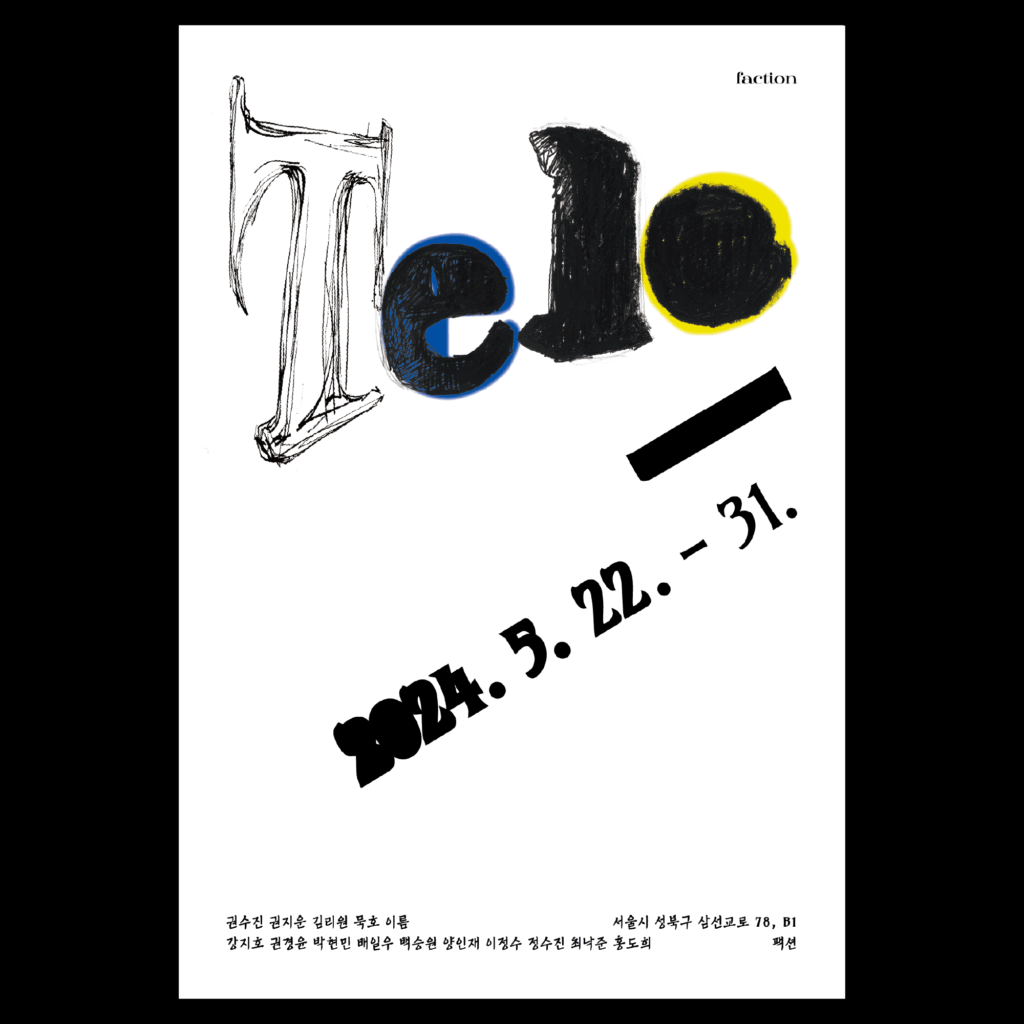
🧩
Group exhibition
May 22 - 31, 2024
Faction B1, 78 Samseongyo-ro, Seongbuk-gu, Seoul
🧩
Curator: Jiun Kwon, Nacjun Choi
Artist: Dohee Hong, Hyunmin Park, Ilwoo Bae, Injae Yang, Jiho Kang, Jiun Kwon, Jungsu Lee, Kyoungyun Kwon, Mukho, Nacjun Choi, Reum Lee, Rewon Kim, Seungwon Baek, Suzin Jung, Suzin Kwon
Design: Jiun Kwon
🧩
1. The first player (A) in <Tele-> starts the game by creating an output based on the initial word provided.
2. The output from (A) is then passed to the next player (B), who uses it as visual information for their own output. This process continues with player (C), and so on.
3. This sequence continues in the same manner through all players, from (A), (B), (C), (D), ….. (M), (N), to (O). Each player create their output by inferring the original word based only on the previous player's output.
4. Regardless of the method of creation, each player must transform the received output into visual information, whether by incorporating, rejecting, replicating, or interpreting it.
5. The goal of the game is to create a series of evolving outputs, which collectively form a sequence that illustrates the changes over time. (from the preface)
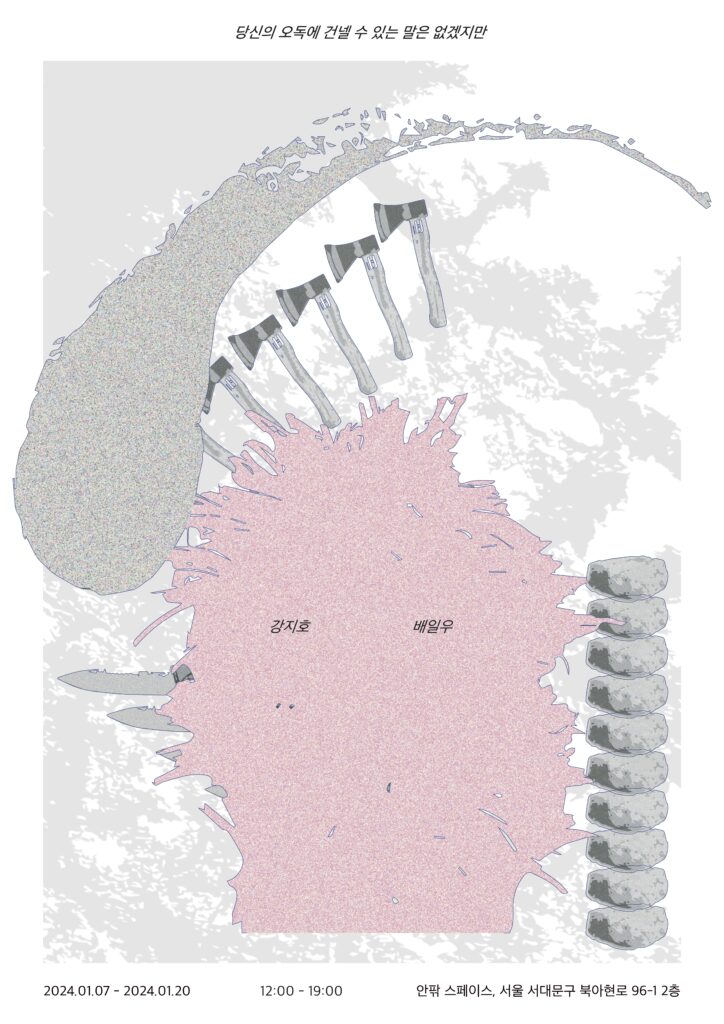
Group Exhibition
January 12 – 24, 2025
Annpaak Space, 2F, 96-1 Bukahyeon-ro, Seodaemun-gu, Seoul
Artists: Kang Jiho, Bae Ilwoo
Text: Jung Eoin
Music: Lee Jungkyung
I want to talk about the unease that accompanies the exhibition space.
The discomfort of not being able to tell what is truly being seen in a space designed to show; the anxiety that my reading might be a misreading; the desire to read carefully; the helplessness of feelings that resist articulation.
When sculpture fills a gallery, the unease intensifies as I flail to deduce the function of forms that at first glance seem useless.
There are always stories that are naturally omitted or tucked away during the process of making a work.
Isn’t there a simpler way to estimate what those stories might be?
Before the unease that emanates from the exhibition space, before the difficulty of confronting the work itself, can we be just a little less bewildered?
Through such questions, this exhibition attempts to track the hidden stories behind sculpture using simple means: form, size, tools, materials—elements accessible to any viewer—as clues.
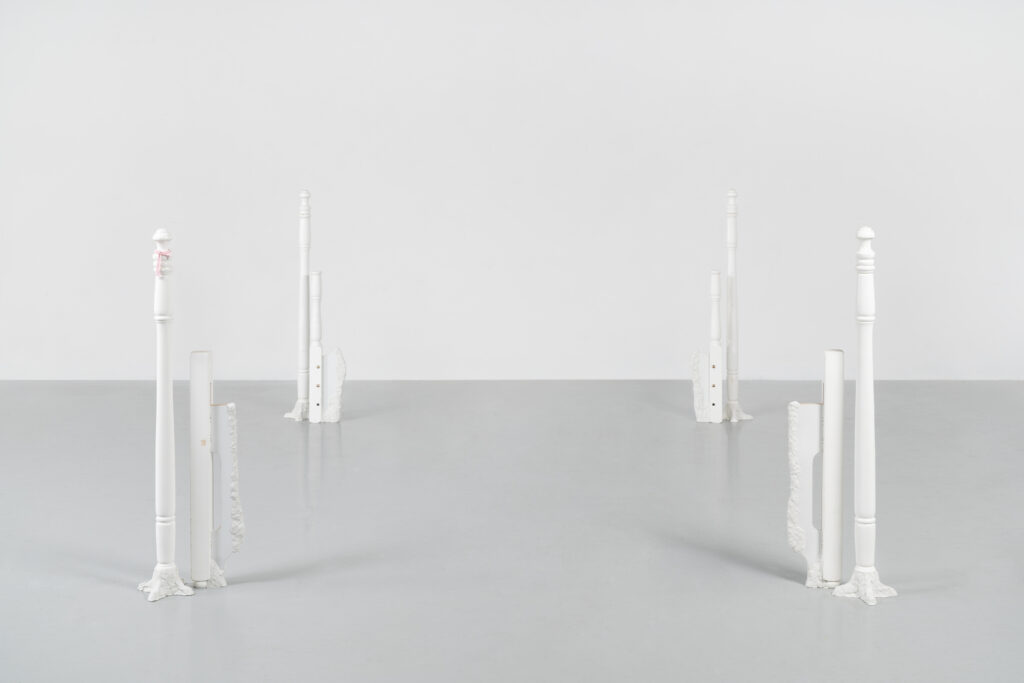
Bed frame, bed legs, Shibatool
Dimensions variable
2025

PLA, Shibatool, artificial leaves, bricks
Dimensions variable
2025
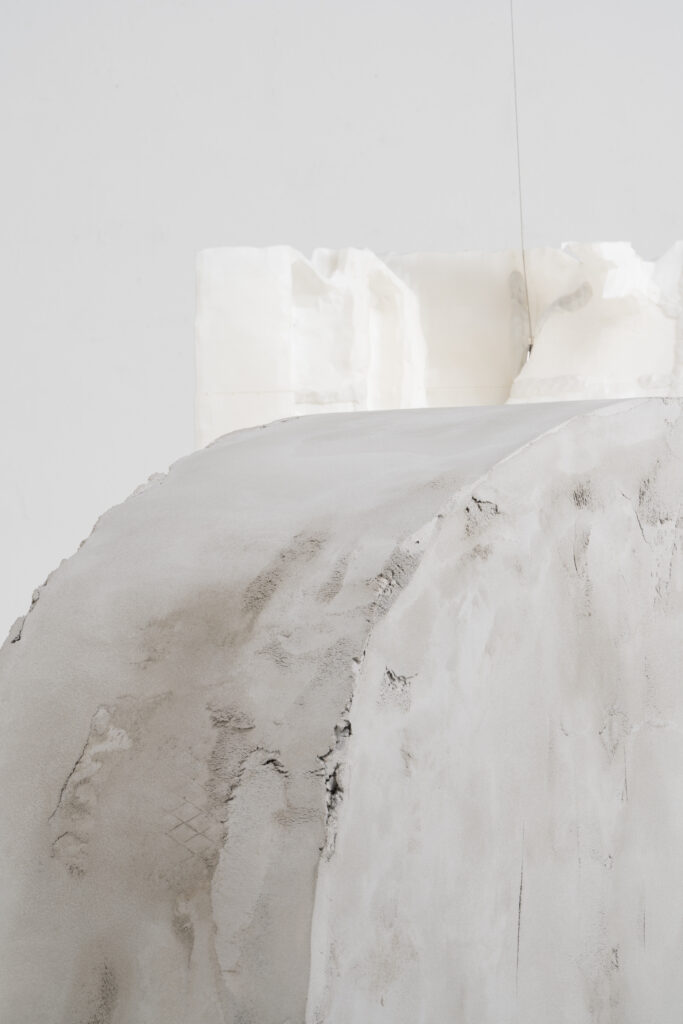
PLA, Shibatool, PLA fragments, urethane foam, cement on wire mesh
115(h) X 122 X 75 cm
2025
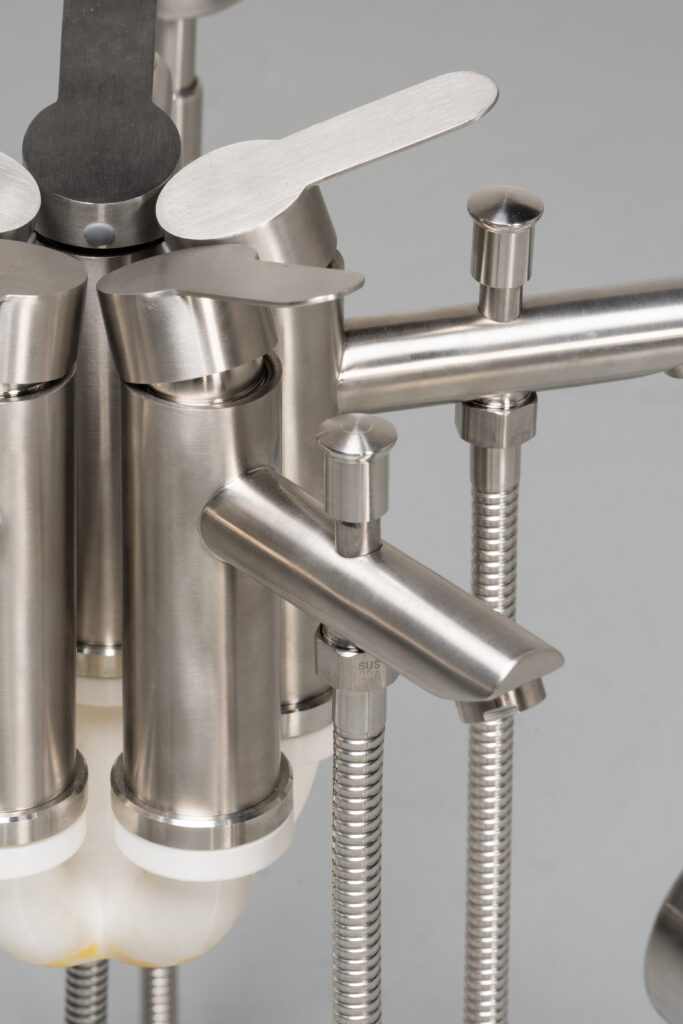
Faucet, shower hose, shower head, PLA
60(h) x 60 x 60 cm
2024
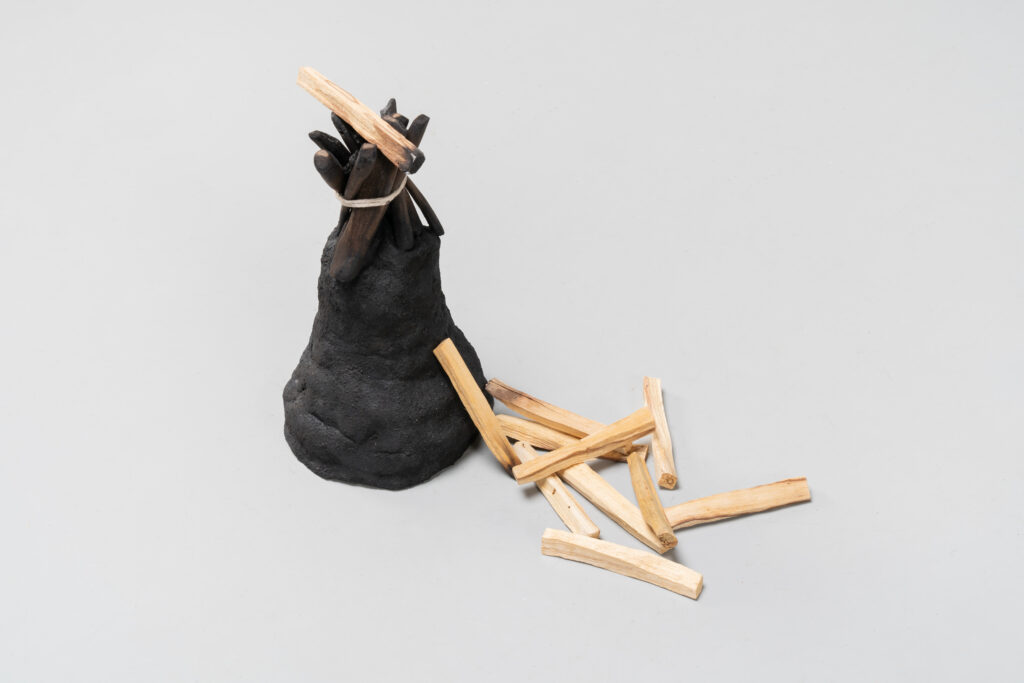
Palo Santo smudge stick, ash, Shibatool
32(h) x 15 x 15 cm
2024

Capsule coffee, coffee grounds, paper clay
14(h) x 180 x 40 cm
2024

